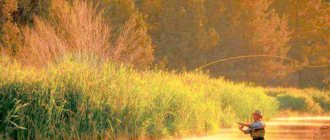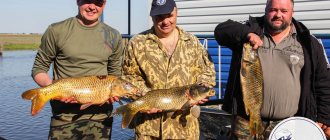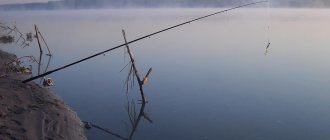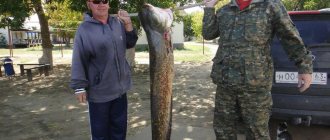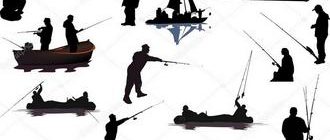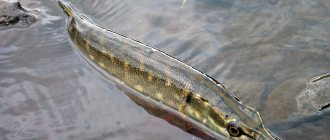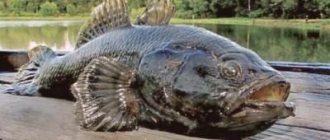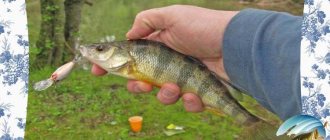Fishing travelers who have visited all the fish-rich reservoirs of our country sooner or later ask the question: where else to go? The answer is obvious - to Karelia. And the best time to go there is in September. There are two ways to fish in this region: by staying at one of the bases or as a wild man in your own tent. Pleasure is guaranteed in any case.
Features of the region that are worth considering
The Republic of Karelia is a northern, harsh region, and this imposes some restrictions on fishing in general. For example, it is better not to appear here before April, especially in areas such as Loukhsky and Belomorsky. Even if there is no longer ice on the reservoirs, the water temperature will be low and the weather will be uncomfortable. In addition, in the spring there are various fishing bans, and local fisheries inspectors don’t care that distant guests know nothing about them. In general, the best time to fish here is in late summer and early autumn, when you can use your entire arsenal and don’t have to actively wave your arms to get rid of annoying insects.
The condition of the main highways in Karelia is satisfactory, but roads of secondary importance are mostly unpaved. After the rain, many of them are very washed out, so before you go fishing here, it is worth checking the weather forecast for the entire period of your trip. Of course, the car should have high ground clearance; it’s better not to go here on a car designed to drive on smooth asphalt.
You definitely need to take care of your own safety during a fishing tour and while on the “big water”. Every year, the local reservoirs take the lives of careless fishermen, both local and visitors, so you should go out on the water in a life jacket. If anything, it will help you hold out in cold water until help arrives.

Now about the pleasant things. The rivers and lakes in this area abound with fish, and a wide variety of them. Here, a spinner, a floater, and a fan of the English donkey will be able to soothe the irrepressible fishing soul.
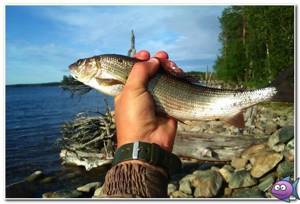
The best places for fisherman
There are more than sixty thousand lakes and almost thirty thousand rivers in Karelia, and almost every body of water contains fish. The places here are truly wild and fishy. And this allows fishermen to thoroughly enjoy wild fishing. But among the Karelian reservoirs there are several rivers and lakes, which are the most favorite places for fishing among local fishermen and visiting amateur fishermen.
It is also worth remembering that lakes and rivers are usually selected according to the set of fish species, so when fishing for salmon, fishermen usually go to the north of Karelia. For lovers of trophy fishing, ordinary places are not suitable; such fishermen should go to deserted places that cannot be reached by transport. It is in such small wild lakes that trophy fish species can be found.
Lakes
There are many different little-known lakes in Karelia that have a wide range of fish species, in particular this applies to small lakes that are located in the virgin part of Karelia
Of the many lakes in Karelia, several of the largest freshwater reservoirs stand out, since all of these lakes have shores that you can drive to. At the same time, there is plenty of fish in the lakes, and the large size allows you to be alone with nature.
Ladoga is the largest Karelian lake; in addition, Lake Ladoga is home to almost sixty species of fish. The main ones:
- roach;
- pike;
- zander;
- salmon;
- trout.
Sometimes you may come across:
- sturgeon;
- sterlet.
Most fishing on the lake takes place using a boat, since the coastline often does not allow fishing from the shore. The southern part of the lake is shallow and mainly catches pike perch, while in the north there is fishing for salmon and sturgeon. At the same time, fish are caught mainly in a skerry, that is, a strait or cove between islands near the coast.
Onega is smaller than Ladoga, but for fishermen this lake looks like a more preferable option. This is due to the fact that there are many species of salmon in the lake. It is worth remembering that salmon fishing is carried out only under a sports license.
In addition, the lake contains:
- pike;
- zander;
- perches;
- white fish.
Syamoozero is located in the southern part of Karelia, on the territory of the Shuya basin. The lake itself has almost a hundred islands, as well as many coves and bays.
The lake is inhabited by:
- whitefish;
- chubs;
- bream;
- Sintsy;
- silver bream;
- ruffs;
- perch larger than a kilogram;
- zander;
- pike.
At the same time, not only fishermen, but also pike and zander are fighting for all the fishing spots. That is, where there is pike perch, there is almost no chance of catching pike.
Pyaozero is the largest lake in the northern region of Karelia. The average depth is sixteen meters, and the maximum reaches fifty. The lake is considered deep-water, and there is almost no civilization nearby. This lake is often visited by fans of trophy fishing.
Here you can catch large specimens:
- pike;
- grayling;
- ide;
- trout;
- whitefish;
- brown trout
There are about fifteen other species. It is worth noting that nearby is Topoozero, which has the same list of inhabitants, since both lakes are part of the systems of the Kumskaya reservoir zone. At the same time, it is preferable to go here for grayling. This is due to the fact that in this lake grayling lives in huge quantities and at the same time has a size of up to one kilogram.
There are many different little-known lakes in Karelia that have a wide range of fish species, in particular this applies to small lakes that are located in the virgin part of Karelia. But also little-known lakes, which are quite large, are simply known strictly among the region’s fishermen. For example, Vodloozero or Segoozero, as well as Kuito.
Rivers
Shuya is constantly visited by fishermen and a quiet, calm place here has become a rarity
Rivers are also numerous in Karelia, as are lakes. Moreover, most lakes are filled precisely from these rivers, which leads to the fact that often the set of fish flora in the river and lake is almost the same. It is worth remembering that fish go mainly to the flowing river to spawn. For example, salmon does this.
List of the most popular rivers for fishing among amateur anglers:
- Okhta;
- Pistajoki;
- Suna;
- Keret;
- Vodla;
- Shuya.
There are three most popular rivers for wildfishing:
- Shuya Pool;
- Okhta basin;
- The Chirko-Kem River, which is one of the initial parts of the Kem River.
Each of these three routes has its own set of fish, as well as its own characteristics.
The Shuya basin is located in the south of Karelia and is located quite close to Petrozavodsk, which allows numerous tourists to come here, including from abroad. Shuya is constantly visited by fishermen and a quiet, calm place here has become a rarity, but on the other hand, there are still fewer people than on reservoirs in the central part of Russia.
Here they mainly catch:
- perch;
- zander;
- pike;
- grayling;
- trout.
On the Okhta, which flows into the Kem, there are not many tourists , but people still come here quite often for fishing, mainly because very large fish are found here.
You can catch it here:
- bream;
- perch;
- pike
In addition, almost all the fish of this region are also present, but in limited quantities, because they prefer to live in lakes in the Okhta basin.
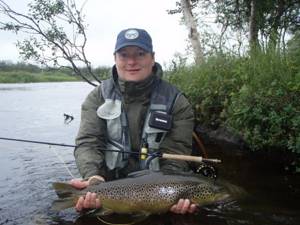
The Chirko-Kemi basin is simply a treasure for anglers who love to catch large specimens of pike, in addition there are many different species of fish that live in large numbers at each rapid. Currently, salmon and salmon have practically disappeared from this river, but other types of fish are abundant here.
Often found here:
- pike;
- burbot;
- dace;
- trout;
- grayling;
- perch;
- bream.
Each river has a standard set of fish, which is common for a given region. The difference becomes noticeable only when comparing northern Karelian rivers and southern ones.
What can you catch in the Republic of Karelia
The species diversity is impressive. There are a little more than 60 species, but some of them have different forms. For example, the Ladoga whitefish is represented by several varieties at once, which is not surprising, because the lake in which it lives is enormous in size. Lake Onega, another endless body of water in the northern part of the country, is not inferior to it.
Some species (about twenty of them) are of great commercial importance, but fishermen are mainly interested in salmon, salmon, trout, whitefish, grayling, bream, pike and pike perch. Many people enjoy catching ide and silver bream, roach and rudd, dace and smelt. Avid burbot hunters remain a separate group. Tench, crucian carp and catfish are rare in Karelian reservoirs, so almost no one catches them purposefully. Bleak, sculpin, spined lance, ruff, minnow and other small things, if they are of interest to fishermen, are of exclusively sporting interest.

It must be said that the number of salmon and salmon has decreased significantly over the past decades, so the catch of these species is often limited. But there is plenty of pike everywhere, both in rivers and lakes. There are even more perch, but pike perch is found only in every tenth body of water. But if you consider that on the territory of the republic there are over 73,000 reservoirs of different genesis, then there will be no problems with finding a place to catch the fanged predator. A representative of the salmon family, vendace or, as it was called in the old days, the royal herring, is very popular. The most effective tackle for catching this tasty fish is a float rod.

Fishing equipment and gear
A boat is the key to success in fishing in Karelia. You can, of course, do without it, but the possibilities will be limited. Many fish, such as bream or whitefish, are constantly moving and rarely come close to the shore, so you have to look for them by boat, exploring large areas of water.

Another feature characteristic of most Karelian lakes is the complex topography of the bottom surface. At the same time, the depth maps that can be found here are very approximate. But without knowledge of the relief and depth, you can’t hope for successful fishing. Therefore, it is important to have with you such a useful device as an echo sounder.
Any sports or amateur gear is applicable on lakes and rivers. Spinning fishermen usually take not only a spare fishing gear (second spinning rod), but also an impressive selection of baits of all types, sizes and colors. It happens that on the same body of water a predator changes its preferences with an interval of a couple of days. If it was biting yesterday, but not today, you should first try other baits and techniques, and if this does not give results, then look for another place.
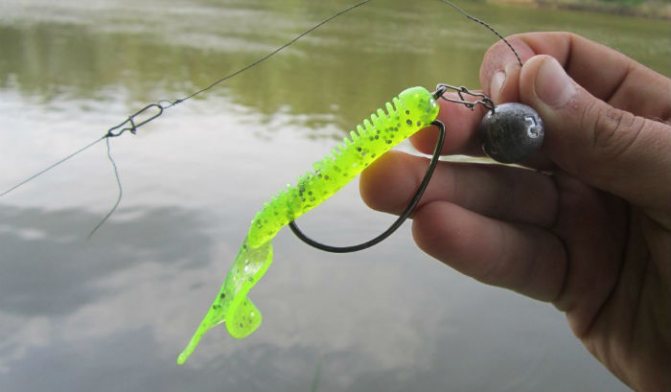
Fans of float fishing are advised to stock up on bait and bait in advance, since finding the same worms or any other suitable living creatures near lakes is quite problematic. The same goes for bottom fishers and fly fishers. By the way, in Karelia you can catch decent fish from the shore using feeder gear.
In addition to the mentioned gear, summer girders, supplies and mugs are popular. But to use them, you must have a watercraft. As a rule, there are no problems with live bait; spined fish, minnows and bleak are found almost everywhere.

Already in September, some boaters take out winter fishing rods for ice fishing. In cool weather, you can use them very successfully to catch burbot and more.
Winter and spring period
It is not customary to separate the winter and spring periods in Karelia. Severe cold sets in already in November. By December, all reservoirs and lakes are covered with ice, which begins to melt only in April. During very low temperatures, fishing is suspended, since returning home with a large catch is hardly possible. One of the distinctive features of the winter-spring period is the need for wild fishing in Karelia. Experienced guides and local residents know where to go to get the maximum catch. Comfortable, popular recreation centers are closing. Difficult weather conditions can be compensated by a good catch:
- Grayling , which is found at shallow depths, which makes it possible to catch tasty fish using a regular winter fishing rod with a spoon.
- Perch . The fish cannot stand severe frosts and windy weather, so it tries to go as deep as possible to a depth of 8-10 meters. A good catch can only be achieved with a winter fishing rod, long fishing line and bait in the form of bloodworms or maggots.
- Burbot , which begins to actively peck in mid-February. It is impossible to meet fish near the coastline, so you should go closer to the middle of the reservoir. The preferred habitat depth is 15 meters.
- Whitefish and roach . It is worth starting hunting with the onset of the first thaw. April is considered the best month for catching whitefish and roach.
Fishing in winter and spring is not suitable for inexperienced fishermen who have never gone to wild places. It is better for such people to take the help of guides.
Promising directions
There are so many lakes in the Republic of Karelia that it is difficult for fishermen who come here for the first time to decide where to fish. Let's try to give them some advice.
Those who prefer to fish wild in a tent should pay attention to the reservoirs of the Pryazhinsky, Kalevalsky and Medvezhyegorsky districts. They abound in fish, there are many good anchorages on the banks, and most importantly, most of the rivers and lakes are located near populated areas. Another advantage of these places is the normal condition of the main roads. Also, “savages” will be able to enjoy excellent fishing in the Louhi region, but this is literally a wilderness. Meeting other people here is unlikely.
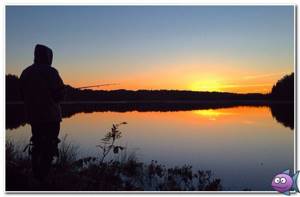
They go to Sortavala, Pitkyaranta and Prionezhsky districts for trophies. This is understandable, Lakes Ladoga and Onega have kilometers of water surface and serious depths where real “monsters” live. You can choose a smaller pond, but it’s good if there are a lot of fish in it. For example, Lake Yanisjärvi in the Sortavala region or, as the Finns call it, Hare Lake, is so-so in terms of fishing. If you listen to the reviews of anglers about it, you can safely conclude that it is definitely not included in the fishing top.
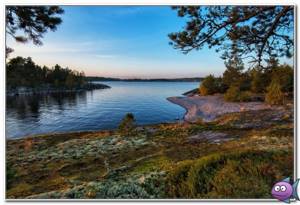
Fishermen for whom comfort comes first should choose places with a developed road network and numerous tourist and fishing bases. These include Kondopozhsky, Lakhtenpokhsky and Sortavala districts. Unfortunately, there are fewer fish in their reservoirs than in the above-mentioned large lakes, but there are all conditions for a pleasant holiday, including for a family or a large group. If you make friends with local rangers, fishing will also be memorable for a lifetime. They will show you catchable places and tell you how to fish.
Is it worth going to Karelia in October?
You are sitting and wondering whether it is worth going to Karelia in October. Of course, it’s worth it, and preferably not only in October, at every time of the year Karelia reveals itself from a different side. Mushrooms and some berries can be collected before the first night frost. There are few tourists and other onlookers at this time (the main peak occurs during the holiday season). Fishing is in full swing at this time. Yes, it's a little chilly outside and maybe rainy. I think it’s a good time to relax in October, when it’s cool and you can just dress well, rather than when it’s hot and stuffy and you don’t want to go anywhere out of the shade. Also, in October there are no mosquitoes, although there are few of them on our shores even in the summer!
And also, attractions and museums are open as usual in October. Without any problems you can visit Kizhi, Martialnye Vody, Kivach, Girvas (free), Mount Sampo and other interesting places that are not far from us!
I hope that, in general, the article will help answer the question of whether it is worth going to Karelia in October.


